Erwin Miyasaka: Teaching Tokugawa math
Do you teach Tokugawa Japan? If so you probably spend some time talking about the rise of popular education, the terakoya temple schools etc. I found a good book to help explain the rise of math education. It is Fukagawa, H., & Rothman, T. (2008). Sacred mathematics : Japanese temple geometry. Princeton: Princeton University Press. The book itself seems to be more aimed at people who like solving math problems, but there are a lot of pictures that can help you teach about why people wanted to get educated. Here is a merchant who has prospered because he has learned math.
Why does math help? Well, here is an oil merchant who has measure out some oil using two ladles of the wrong sizes. I bet math would help him!
Ugh. A story problem. If I have to do story problems I am not going to be an oil merchant. Maybe I will grow up to be a ruthless bandit!
Bandits dividing a piece of stolen cloth. Maybe everyone needs math.
That math is useful for lots of people in a commercial society is not surprising, although the pictures help. What I found most interesting were the shrine geometry problems. Apparently there were math groups that would show up at shrines and try to solve the posted problems. Here is one of the placards
A later version
and a modernized version
They look like geometry proofs to me.
I would have liked more social history on these math groups. Was there some religious significance to them? I assume that to some extent math groups served as social networks, like poetry groups, but I would like more on that. They mention that women sometimes solved these, but little else on the make-up of the groups. This being Tokugawa Japan I bet there are several 12-volume studies of these math groups, but nothing I could quickly google led me to an explanation of the social background. There is at least some info here Noel J. Pinnington. (2009). Sacred Mathematics: Japanese Temple Geometry (review). Monumenta Nipponica, 64(1), 174-177.
Ver fuente
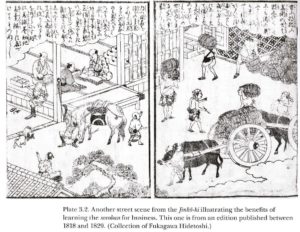
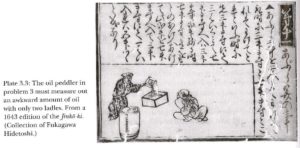
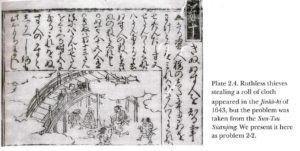
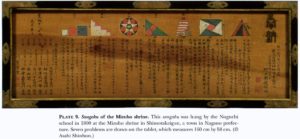
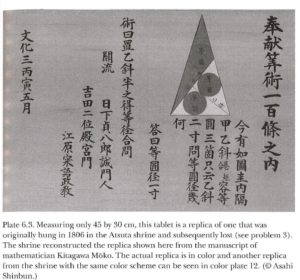
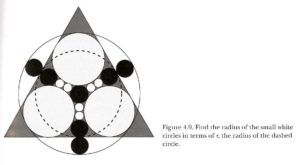
Comments
Post a Comment